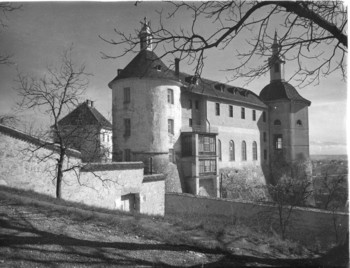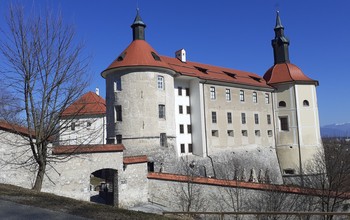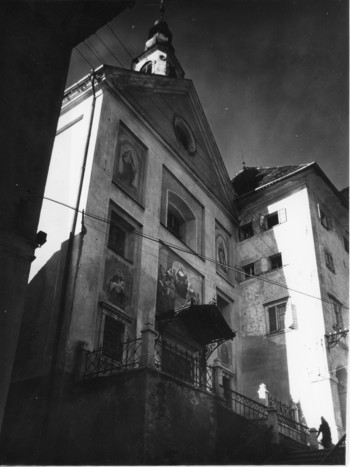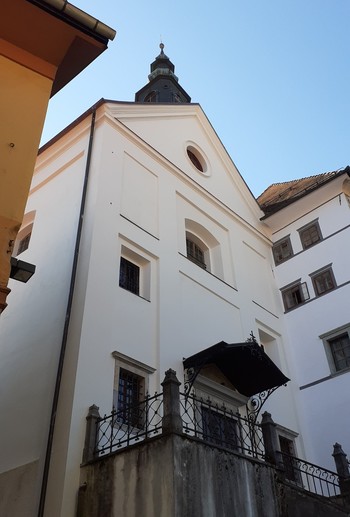Ophélie Exploring Škofja Loka Through the Eyes of Tone Mlakar
An Exhibition of Škofja Loka Photos Taken Between 1950 and 1970 and in 2022




15. 11. 2023–5. 5. 2024
Curator: Anja Zver
Exhibition opening: Wednesday, November 15 2023, at 6 p.m., in the Round Tower of the Škofja Loka Museum.
The exhibition presents photos of Škofja Loka’s architectural and urban cultural heritage back in the day and today. It features a selection of photographs from the archive of Tone Mlakar, who for more than five decades kept a photographic chronicle of Škofja Loka, its architecture and inhabitants, as well as urban and rural cultural landscapes. The exhibited colour photos were taken by Ophélie Chapuis from France, a student of art history, cultural mediation and exhibition curation at
the University of Tours, who was a volunteer at Zavod O in Škofja Loka. During the time she spent in Škofja Loka, she also volunteered at the Škofja Loka Museum, where the former project manager Branka Gradišar and the curator Nina Misson suggested that she should make a selection of Škofja Loka photos while working on digitisation of the Tone Mlakar archive and to recreate the selected photos.
The museum’s aim was also to encourage different ways of exploring the architectural heritage of Škofja Loka: Ophélie Chapuis, who lived in Škofja Loka for a brief period only and was thus a tourist, so to speak, wandered around the town’s streets in search of history that had been captured by Tone Mlakar. She got to know Škofja Loka’s urban tissue through his eyes, which gives the project an intimate character. The set of Mlakar’s photos is contrasted by Ophélie Chapuis’ scenes with fresh information about the depicted locations and buildings. The counterpoint of black-and-white and colour photos allows viewers to follow the changes in the urban landscape and also to notice that a large part of Škofja Loka’s treasured medieval old town has been preserved and remained unchanged. This is further attested by the photographic records of the history of the town’s urban landmarks and features captured by Tone Mlakar in the 1950s and 1960s. Despite the duality that is part of the project concept, the selection of photos from the Tone Mlakar archive and Ophélie’s reactions to them nevertheless paint a rounded picture of Škofja Loka with its central attractions and typical views that are anchored in the consciousness of locals and tourists alike.
As a photographic chronicle of Škofja Loka and the surrounding area, the Tone Mlakar archive bears witness to the town’s bygone times. Since it was purchased in 2020, the Škofja Loka Museum curators have been digitising, uncovering, studying and presenting it to the public using various approaches. A selection of Mlakar’s photos was included in the group exhibition Photo Loka: Creating Škofja Loka’s Photographic History (Castle Gallery, 18 Nov 2020–31 Oct 2021) and since spring, Mlakar’s photos of the Poljane Valley and the surrounding hills have been on view as part of the Imprints of Time exhibition in the café at the Visoko Mansion. In 2022, the Škofja Loka Museum started the aforementioned Razslikovanja project focused on exploring the old town of Škofja Loka and its immediate vicinity, and posted the artist’s photos on Facebook. The exhibition Ophélie Exploring Škofja Loka: Through the Eyes of Tone Mlakar continues uncovering the Tone Mlakar archive and in a one-of-a-kind way also explores the local environment with the help of the museum collection.
